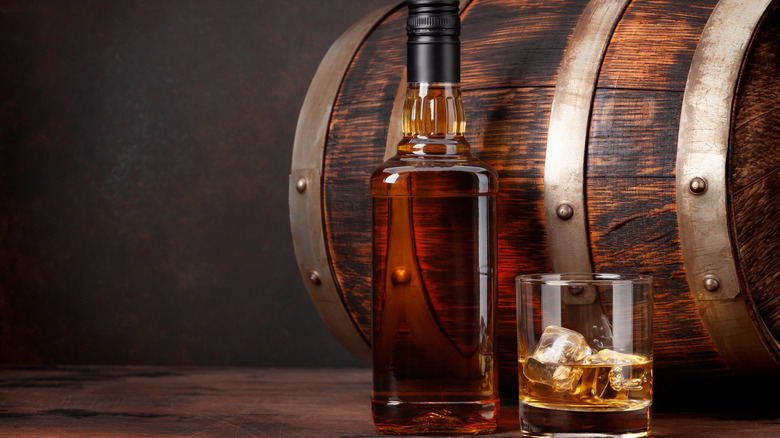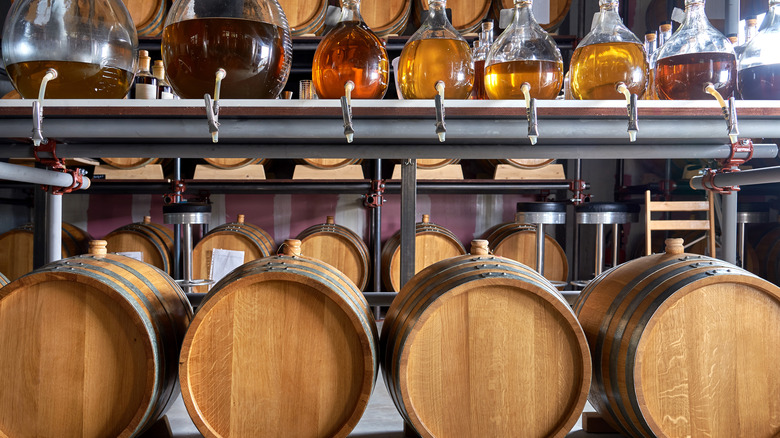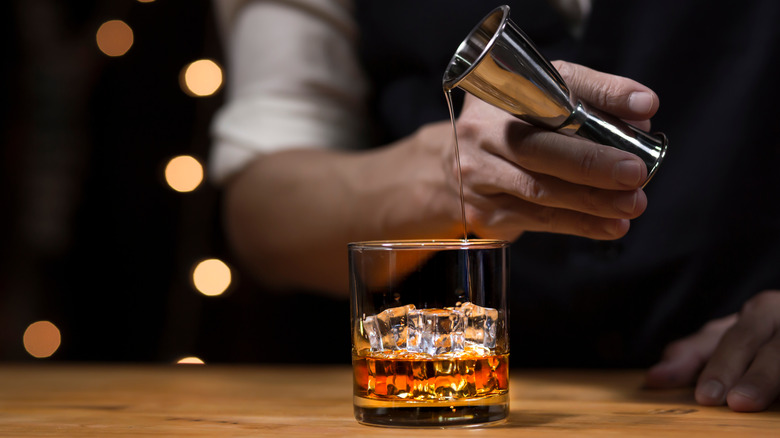What Does It Mean When Whiskey Is Bottled-In-Bond?
When it comes to whiskey, there's a whole lot for connoisseurs to know. From varying mashes to distillation and finally aging, each whiskey comes with its own set of details and history. And while it might be tempting to think that you can bypass whiskey education and count on the price to signal the best bottles, there's actually a better way. If you want to guarantee that what you're buying is a quality bottle then just look for a whiskey that's been bottled-in-bond.
Okay, but what is bonded whiskey anyway? Basically, it's a certification that says the bottle in question meets the highest quality requirements. So you're pretty much guaranteed a whiskey that tastes great while also having a high alcohol content. And it's completely traceable, down to the exact distillery where it was produced and the facility where it was bottled (if different). Whiskey isn't the only type of spirit that is bottled-in-bond, but it is the most popular.
What are the quality requirements for bonded whiskey?
In order for a whiskey to be labeled as bottled-in-bond, there are specific measures it has to meet. For one, it has to be aged for a minimum of four years. But it's not as simple as just throwing the whiskey in some barrels and starting the clock either — those whiskey barrels have to be stored in a location that has been bonded by the federal government.
Another qualification is the whiskey's alcohol content, which has to be precisely 100-proof (or 50% alcohol) no more and no less. There are also strict rules as to when and where the spirit can be distilled. It has to come from a single distillery and its production cannot cross over more than one season (which lasts six months, beginning in January and July). This part is so important that each bottle has to be marked with the Distilled Spirits Plant where it was produced and bottled.
What is the history of bonded whiskey?
Bonded whiskey and other spirits can trace their history back to the Bottled-in-Bond Act of 1897. The legislation was enacted to protect consumers from questionable and even dangerous shortcuts. At the time, some whiskey sellers were adding everything from caramel coloring to formaldehyde to make a quick buck by faking authentic whiskey. And while some caramel coloring is still used in many whiskeys to keep the color the same, by purchasing bottled-in-bond whiskey you can rest assured that it won't be present.
While bonded whiskey's popularity waned in the late 20th century, it's been making a comeback in recent years. The higher proof may have been why fewer people were drinking it, as most consumers had grown accustomed to 80-proof liquors instead. But the overall quality and taste seem to be pulling fans of craft spirits back in, leading a revival for bottled-in-bond whiskey.


